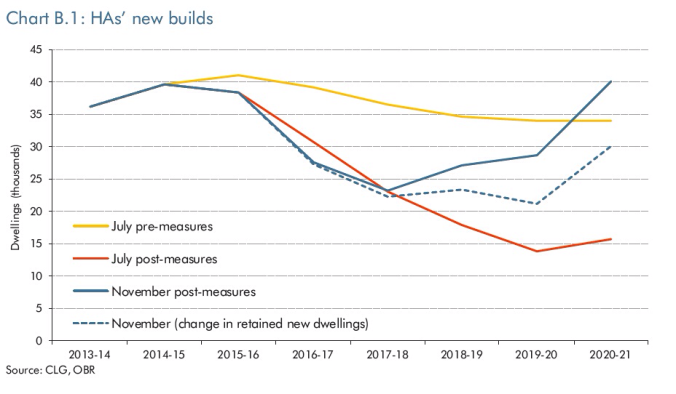 2015 was an unpredictable year.
2015 was an unpredictable year.
All the pollsters and pundits were flummoxed by the general election result, as voters decided that one coalition parliament was enough.
Even on the night, as more reliable numbers started to come in, Paddy Ashdown said he’d eat his hat if the predictions of a 47-seat loss were correct. He ate a hat-shaped cake on the following week’s Question Time.
Then, Jeremy Corbyn went from the 150/1 outsider to storm the Labour leadership contest.
So, if we’ve learnt anything from the last year, is that we cannot predict the future.
That uncomfortable fact aside, here are my predictions for housing in 2016.
We’ll build more homes – but still not enough
The government has set its sights on one million new homes by 2020. Or 200,000 a year.
Not bad. But back in 2007 the government set a target of building 240,000 new homes a year by…2016. Ah.
Even then the report that now sits in the House of Commons library said there was debate about whether this figure would actually meet demand and deal with the backlog of unmet housing need.
At the time private house builders were building around 190,000 homes, but then the market crashed. There’s a recovery going on, with starts and completions increasing, but even 200,000 will need a huge effort from both public and private sectors.
We need to set our sights higher, aiming to build far more, if we want to meet that new as well as pent up demand.
Home ownership will increase – but affordable housing will suffer
Here I’ll just point you towards the excellent brickonomics blog from Brian Green.
He quotes the chancellor, at the Autumn Statement, saying ‘above all, we choose to build the homes that people can buy. For there is a growing crisis of home ownership in our country.’
The package of measures, from starter homes to the relaxing of shared ownership rules, the Voluntary Right to Buy and continuing Help to Buy will undoubtedly support people to buy a home. It’s hard to predict if it’ll hit the target of one million new homeowners, but the chancellor will certainly see a rising percentage of home ownership.
However, in Brian’s words, ‘note too, from the Office for Budget Responsibility analysis, that the Chancellor is willing to slow the housing delivery from housing associations, at least in the short term, in his pursuit to boost home-ownership rates.’
Time for a graph.

The summer Budget, mainly due to the 1% rent cut, put the brakes on housing association development.
However, the Section 106 changes to prioritise starter home for sale, and the eventual sales of social rented homes through the Right to Buy may mean that it is the affordable rented sector that suffers in the short and long term, creating a different type of housing crisis in the future.
Prices will keep rising
I’m lucky enough to own (a bit of) my own home. And as my family grows I’d like, one day, to be able to move to a bigger house. But as I live and work in the south east, that’s getting harder and harder. I can’t imagine how hard it is for people just starting out.
Prices rose more than 10% nationally in 2015. Newham rose a staggering 22%. Wages are recovering, but the longer you take to save, the further out of reach the houses become.
I can’t see this cycle ending yet. We’re just not keeping up with demand and supply-side policies will inevitably see prices continue to rise.
Housing associations will adapt
I’m biased here, I work for a housing association, but I think the sector will do some great work next year. It will be an incredibly difficult year for the sector, particularly the financial impact of the rent cut, but I believe they’ll adapt.
In 2014/15, as featured in Inside Housing’s annual survey, the top 50 developing housing associations finished 40,213 homes across a range of tenures. This compared to 26,214 completed by the 50 biggest builders the year before.
They forecast 34,526 completions this year, rising to a very impressive 106,250 by 2018.
Given the Budget, as you can see from that graph from the OBR, that’s going to be tough. But I suspect housing associations will meet the 34,000 figure and push on, minimising the impact.
There’s no surprises here, they’ll change the mix slightly, they’ll have to be smarter on asset management strategies and they’ll have to be more effective and efficient in everything they do.
And finally, some political stability.
Despite the very public positioning to take over from David Cameron, the shadow cabinet unrest with the new Labour leader and the usual 12-month career of a housing minister, my final prediction is one of stability.
I think, given next year will be dominated by the escalating immigration and Syrian crisis as well as the EU referendum, I suspect Cameron, Corbyn and Lewis will still be in their current jobs next time we sing Auld Lang Syne.
What’s your prediction for 2016? Leave a comment below and scroll down to follow this blog via email for more housing debate next year.
Pingback: Bringing down the houses | 4,000 bricks